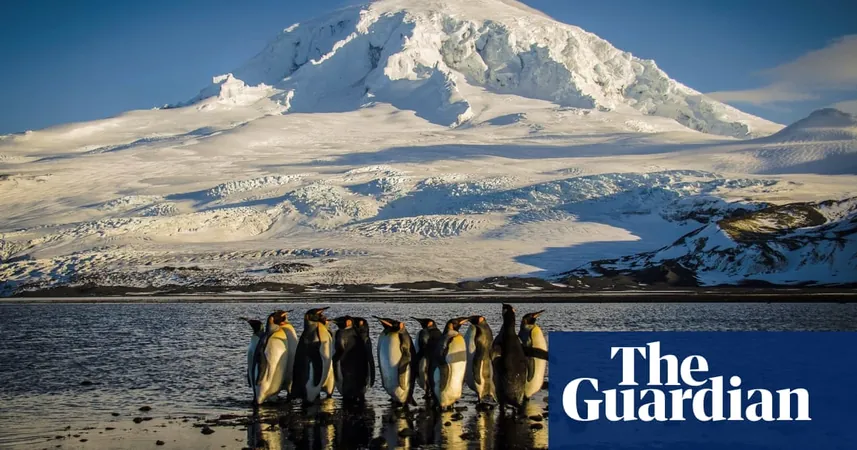
Trump's Trade War Hits the Most Remote Islands on Earth – Find Out Why!
2025-04-03
Author: Chun
Trump's Trade War and Remote Islands
In an unexpected twist in his ongoing trade war, former President Donald Trump has imposed a 10% tariff on goods from the uninhabited Heard Island and McDonald Islands, barren volcanic territories near Antarctica. This drastic move highlights the reach of U.S. trade policy, even affecting some of the most isolated locations on the planet.
Geographical and Historical Context
Located several hundred kilometers from the Antarctic mainland, these islands are only accessible via a grueling two-week boat journey from Perth, Australia. They are barely touched by human presence, with the last confirmed visit nearly a decade ago, primarily for scientific research. Despite their desolate conditions and the absence of any human habitation, the islands have caught the attention of the White House which included them in a list of territories subject to new tariffs.
Political Reactions and Economic Implications
Australian Prime Minister Anthony Albanese expressed incredulity at the decision, stating, “Nowhere on earth is safe.” His comments stem from the fact that these remote islands are classified as Australia's external territories, alongside other distant areas such as Cocos (Keeling) Islands, Christmas Island, and Norfolk Island, the latter of which faces a whopping 29% tariff on its goods.
Norfolk Island's Response
Norfolk Island, inhabited by just over 2,000 people and located 1,600 kilometers northeast of Sydney, has recently exported notable amounts of its primary goods, notably leather footwear, even managing to send $655,000 worth of products to the U.S. in 2023. Australian officials are perplexed by the tariffs, especially considering the economic viability and trade competitiveness of these territories against a gigantic economy like the U.S.’s.
Mystery of Exports from Heard Island and McDonald Islands
Perhaps the most bewildering are the reports concerning Heard Island and McDonald Islands. Despite having a fishery, there are no buildings or permanent residents. Surprisingly, U.S. import data appears to indicate that in 2022, the U.S. imported $1.4 million worth of goods from these islands, primarily categorized as “machinery and electrical” items. The source and nature of these exports remain an enigma, as there are no facilities on the islands to produce such goods.
Conclusion and Future Implications
This situation raises questions about the repercussions of trade tariffs on regions without substantial industries or populations, effectively rendering the strange new predicament a symbol of just how far-reaching Trump's trade policies are. As Australia grapples with these changes, officials are left to wonder just how many more unexpected territories might be affected as the political landscape continues to unravel.
Stay Tuned
Stay tuned as we follow the developments of this unusual situation, and don’t miss out on more surprising news from the world of international trades and the politics that govern them!




 Brasil (PT)
Brasil (PT)
 Canada (EN)
Canada (EN)
 Chile (ES)
Chile (ES)
 Česko (CS)
Česko (CS)
 대한민국 (KO)
대한민국 (KO)
 España (ES)
España (ES)
 France (FR)
France (FR)
 Hong Kong (EN)
Hong Kong (EN)
 Italia (IT)
Italia (IT)
 日本 (JA)
日本 (JA)
 Magyarország (HU)
Magyarország (HU)
 Norge (NO)
Norge (NO)
 Polska (PL)
Polska (PL)
 Schweiz (DE)
Schweiz (DE)
 Singapore (EN)
Singapore (EN)
 Sverige (SV)
Sverige (SV)
 Suomi (FI)
Suomi (FI)
 Türkiye (TR)
Türkiye (TR)
 الإمارات العربية المتحدة (AR)
الإمارات العربية المتحدة (AR)